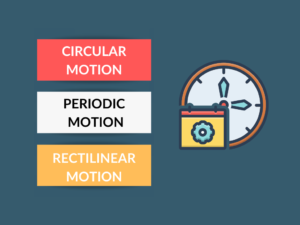Difference between Circular and Rotational Motion
Introduction
Understanding the concepts of circular and rotational motion is vital in comprehending various physical phenomena. In this article, we will delve into the differences between circular and rotational motion, explore their examples, discuss their respective applications, and provide a comprehensive table highlighting their distinctions. So, let’s get started!
What is Circular Motion?
Circular motion refers to the movement of an object along a circular path. In circular motion, the object continuously changes its direction while maintaining a constant distance from a fixed point called the center of the circle.
Examples of Circular Motion
Some common examples of circular motion are:
- A car moving along a curved road
- A merry-go-round at an amusement park
- Earth revolving around the Sun
Uses of Circular Motion
Circular motion finds various applications in our daily lives. Some notable uses include:
- Centrifuges used in laboratories to separate substances of different densities
- Tires of a moving vehicle rotating
- Centrifugal governors used in steam engines
What is Rotational Motion?
Rotational motion refers to the spinning or turning of an object around an axis. In this type of motion, an object undergoes a rotational movement where different points on the object move through arcs of circles in the same amount of time.
Examples of Rotational Motion
Examples of rotational motion can be observed in various scenarios like:
- A spinning top
- A rotating ceiling fan
- The Earth rotating on its axis
Uses of Rotational Motion
Rotational motion has numerous applications in different fields. Some significant uses include:
- Electric motors that convert electrical energy into mechanical rotational energy
- Wind turbines generating electricity from the rotational kinetic energy of wind
- Rotating antennas in radar systems
Differences between Circular and Rotational Motion
| Difference Area | Circular Motion | Rotational Motion |
|---|---|---|
| Motion Description | Object moves along a circular path | Object spins or turns around an axis |
| Path Shape | Circular | Not limited to a specific shape |
| Speed | Constant | May vary at different points |
| Nature of Motion | Translation and rotation combined | Pure rotation |
| Axis of Rotation | N/A | Present |
| Examples | Car on a curved road, Earth around the Sun | Spinning top, rotating ceiling fan |
| Application Area | Rides, machinery, celestial mechanics | Motors, turbines, robotics |
| Centripetal Force | Required for circular motion | Not always needed for rotational motion |
| Directional Change | Ongoing change in direction | May or may not change direction |
| Conservation of Angular Momentum | Not conserved | Conserved |
Conclusion
By understanding the differences between circular and rotational motion, we can appreciate the diverse ways in which objects move. Circular motion involves moving along a circular path, while rotational motion refers to spinning or turning around an axis. The speed, nature, and examples of these motions differ significantly, leading to varied applications in different fields.
People Also Ask
- Q: What is the main difference between circular and rotational motion?
- Q: How does rotational motion differ from linear motion?
- Q: Do circular and rotational motion have different applications?
- Q: How are circular and rotational motion related?
- Q: Can circular motion exist without rotational motion?
A: The main difference lies in the path shape and the nature of motion. In circular motion, an object moves along a circular path, combining translation and rotation. In rotational motion, the object spins or turns around an axis, exhibiting pure rotation.
A: Linear motion involves an object moving in a straight line, while rotational motion occurs when an object spins or rotates around an axis. The motion in linear motion is purely translational, while rotational motion combines translation and rotation.
A: Yes, circular motion finds applications in rides, machinery, and celestial mechanics, whereas rotational motion is used in motors, turbines, robotics, and various mechanical systems.
A: Circular motion is a special case of rotational motion where the axis of rotation is undefined. While the two are related, rotational motion includes a broader range of movements beyond circular paths.
A: No, circular motion involves both translation and rotation. Without rotation, an object moving along a circular path cannot exhibit circular motion.


